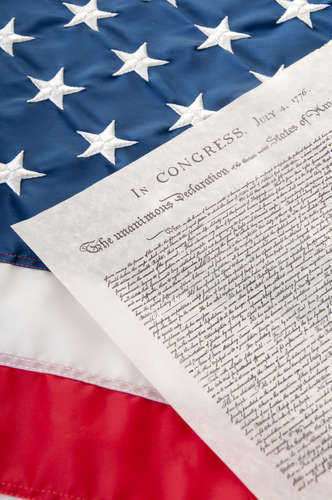Table of Contents

Introduction:
One of the primary aims of the United States of America’s founding fathers was to establish a government that prevented both the tyranny of a single individual and the tyranny of the majority. In this regard, the Constitution of the United States has incorporated the principles of separation of powers and checks and balances. The Federalist Papers, a series of 85 essays published by Alexander Hamilton, James Madison, and John Jay between 1787 and 1788 in support of the ratification of the US Constitution, played a significant role in promoting these two principles. In this article, we will examine the Federalist Papers and explore how they influenced US politics and the legal system.
The Federalist Papers and Separation of Powers:
The concept of separation of powers is rooted in the idea that power corrupts, and absolute power corrupts absolutely. Thus, to prevent the concentration of power in any one person or group, the US Constitution divided the powers of government into three branches: the legislative, executive, and judicial. The legislative branch, Congress, is responsible for making laws. The executive branch, headed by the President, is responsible for enforcing laws. The judicial branch, comprising the Supreme Court and other federal courts, is responsible for interpreting laws.
In The Federalist Papers, Hamilton, Madison, and Jay argued that separation of powers was essential to prevent tyranny and to safeguard liberty. They wrote that “the accumulation of all powers, legislative, executive, and judiciary, in the same hands, whether of one, a few, or many, and whether hereditary, self-appointed, or elective, may justly be pronounced the very definition of tyranny” (Federalist No. 47).
The writers of The Federalist Papers recognized the potential for the three branches of government to conflict with each other as they pursued their separate interests. However, they viewed this competition as a positive development because it would prevent any one branch from becoming too dominant. The Constitution provided each branch with the power to check the other two. For example, Congress can override a presidential veto with a two-thirds majority vote. The President can veto a bill passed by Congress. The Supreme Court can declare acts of Congress or the President unconstitutional.
The Federalist Papers and Checks and Balances:
The concept of checks and balances is closely related to the principle of separation of powers. Madison, in Federalist No. 51, wrote that “in framing a government which is to be administered by men over men, the great difficulty lies in this: you must first enable the government to control the governed, and in the next place oblige it to control itself.”
The Constitution provides several examples of checks and balances. For example, the House of Representatives has the “power of the purse,” meaning it controls the government’s budget. Without funding, the other branches cannot function effectively. Similarly, the President has the power to nominate judges to the federal courts, but the Senate has to confirm those nominees. The Senate can also impeach and remove the President from office.
The Federalist Papers and US Politics:
The Federalist Papers played a significant role in shaping US politics. During the ratification process, the authors used the essays to persuade the public to support the Constitution. They argued that the Constitution would create a strong but limited government that would respect individual rights and liberties.
The Federalist Papers are still relevant in US politics today. Politicians and policymakers often refer to them to support their arguments on issues such as the separation of powers, federalism, and the role of the judiciary. In this sense, the Federalist Papers continue to influence American political thought and practice.
The Federalist Papers and the Legal System:
The Federalist Papers have also had a significant impact on the legal system of the United States. They are often cited in court opinions and legal briefs on issues related to constitutional law.
For example, in the landmark case Marbury v. Madison (1803), Chief Justice John Marshall relied on the Federalist Papers to support the principle of judicial review. Judicial review is the power of the courts to declare an act of Congress or the President unconstitutional. In Federalist No. 78, Hamilton wrote that the judicial branch is the “least dangerous” branch because it has “neither force nor will but merely judgment.” Marshall expanded on Hamilton’s ideas and used them to justify the Supreme Court’s power to interpret the Constitution and strike down laws that violate it.
Ten Important facts about the Federalist Papers:
- The Federalist Papers were a series of essays published between 1787 and 1788 in support of the ratification of the US Constitution.
- The papers were written by Alexander Hamilton, James Madison, and John Jay and were collectively known as The Federalist Papers or The Federalist.
- The Federalist Papers are still regarded as one of the most important works on political theory and American government.
- The primary aim of the Federalist Papers was to persuade the public to support the Constitution and its principles, including the separation of powers and checks and balances.
- The Federalist Papers argued that separation of powers was essential to prevent tyranny and safeguard liberty.
- The writers of The Federalist Papers recognized the potential for the three branches of government to conflict with each other as they pursued their separate interests.
- The Constitution provides each branch with the power to check the other two.
- The Federalist Papers played a significant role in shaping US politics during the ratification process and continue to be relevant today.
- The Federalist Papers have had a significant impact on the legal system of the United States and are often cited in court opinions and legal briefs on issues related to constitutional law.
- The Federalist Papers continue to be an important resource for scholars, politicians, policymakers, and citizens interested in American government and political theory.
Conclusion:
The Federalist Papers are a crucial resource for anyone interested in American government, politics, and constitutional law. The papers provided a compelling argument for the principles of separation of powers and checks and balances, which continue to shape US politics and the legal system. The papers played a crucial role in persuading the public to support the Constitution and its principles. The Federalist Papers have had a lasting impact on American political thought and practice and remain a vital resource for scholars, policymakers, politicians, and citizens. Overall, the Federalist Papers are a testament to the genius of America’s founding fathers and their vision of a government that safeguards individual liberties and human rights.
The Federalist Papers proposed a multi-tiered gubernatorial model, complete with systematic separation of powers enforced on the 3 separate branches that comprised a Federalist central government: Executive, Legislative, and Judicial.
This separation of powers would be maintained by a system of checks and balances – a construct in which the power allotted to the central government would be dispersed between all 3 of its branches.
Furthermore, a system of checks and balances would ensure that each branch could protect itself from any potential abuse of power on the part of the other branches. Each branch was given a set amount of power, which was specific to the nature of the branch itself.
For example:
● The Legislative branch – comprised of both Congress, as well as each representative from each State of the Union, was given authority to create laws. Once a law was proposed, a vote was cast in order to determine the validity of the law. In the event that the majority of the collective State legislative bodies voted in favor of passing the law, it could be sent to the Executive branch for approval, thus ensuring a separation of power between all 3 branches of the central government.
● The Executive branch – or ‘the Administration’ as outlined in the Federalist Papers – was to be comprised of both the President of the United States, as well as selected representatives whose selection required approval by the Legislative branch. This process furthered the notion of separation of powers by disallowing the same governmental branch the power to both create and approve the legislation.
● The Judicial branch was outlined to review the actions of the other 2 branches from a legal standpoint. Without any lawmaking authority, the Judicial branch was simply permitted to regulate the actions of the central government solely within the confines of preexisting, predetermined legislation. In the event that the actions of one (or any) of the 3 Federal branches come into question, the Judicial branch is permitted to review those actions under the system of checks and balances.
Separation of powers in the form of a system of checks and balances was proposed by the authors of the Federalist Papers in order to ensure the existence of a competent, yet democratic central government in the United States.























